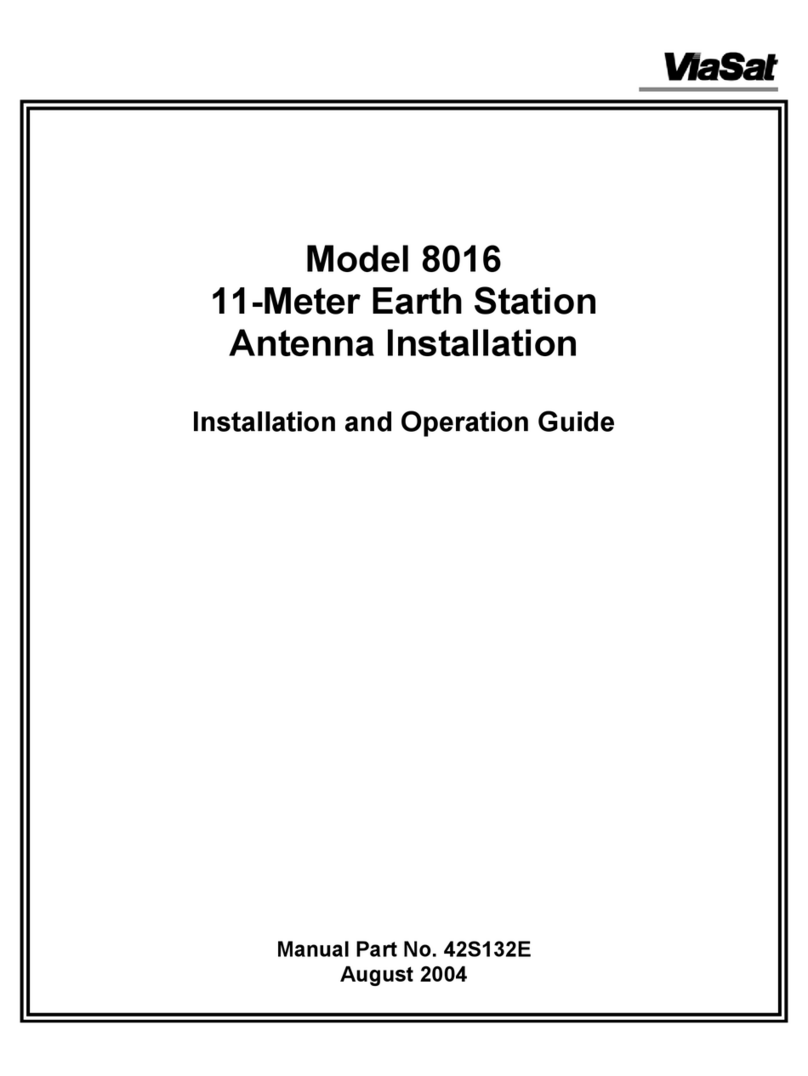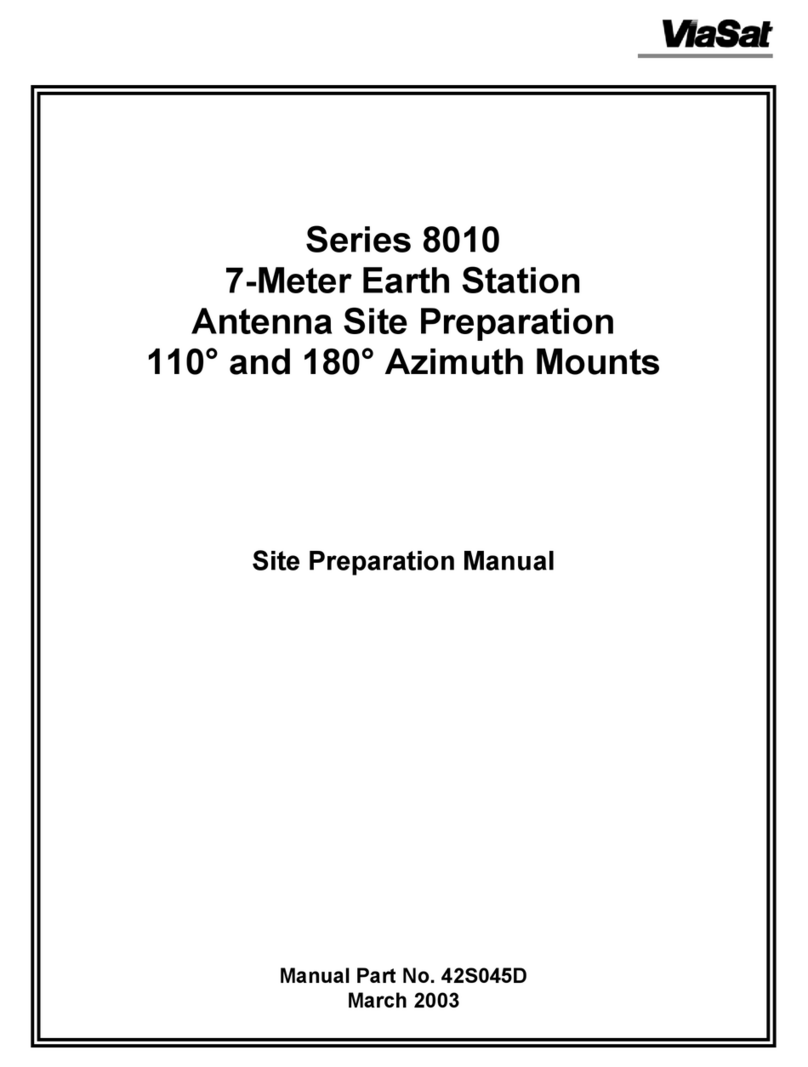
____________________________________________________________________________________________
____________________________________________________________________________________________
42S183D SERIES 8116/8118 16-/18-METER EARTH STATION ANTENNA 1-1
SECTION 1 GENERAL INFORMATION
This manual contains information needed to properly install,
operate, and maintain the 16-/18-Meter (16/18M) Earth Station
Antenna. This section contains general information on the 16/18M
antenna. Sections 2 through 4 contain information pertaining to
16/18M antenna installation. Sections 5 and 6 contain information
pertaining to operation and maintenance. Section 7 describes the
different configurations available for the 16/18M antenna.
Appendix A contains a complete antenna installation checklist with
page references for the detailed procedures. Appendix B and
Appendix C contain mechanical and contour alignment
specifications and report information for the antenna, respectively.
INTRODUCTION TO
MANUAL
All warnings and cautions should be reviewed before any
procedures are performed. Failure to do so may result in personal
injury or equipment damage.
Periodic maintenance and corrosion protection procedures are
contained in Section 5. For replacing components of the antenna,
refer to the installation and assembly drawings contained in
Sections 2, 3, and 4.
The 16/18M Earth Station Antenna provides a high-quality antenna
designed specifically for the INTELSAT-A station market. The
antenna is designed with many standard and optional features to
provide maximum user and application flexibility. Figure 1-1
shows an outline drawing of the 16M/18M antenna. The following
list identifies the main features of the antenna:
DESCRIPTION
• Cassegrain feed for high-efficiency performance
• Designed for minimum maintenance
• Locked-in surface accuracy through precision tooling
• Frequency reuse feed
• Minimum site preparation required
• Full 360° azimuth travel in six over-lapping sectors
• Internal access for a clean, elegant look.
The 16/18M antenna is a Cassegrain design with a reflector and
subreflector that are shaped for maximum efficiency and low
sidelobes. The circularly polarized, four-port, frequency reuse feed
assembly includes a corrugated horn, orthomode transducer,
diplexers, and connecting waveguide. The transmit frequency
band is from 5.850 to 6.425 GHz and the receive frequency band is
from 3.625 to 4.200 GHz. All the performance specifications are
in full compliance with INTELSAT-A specifications.






























